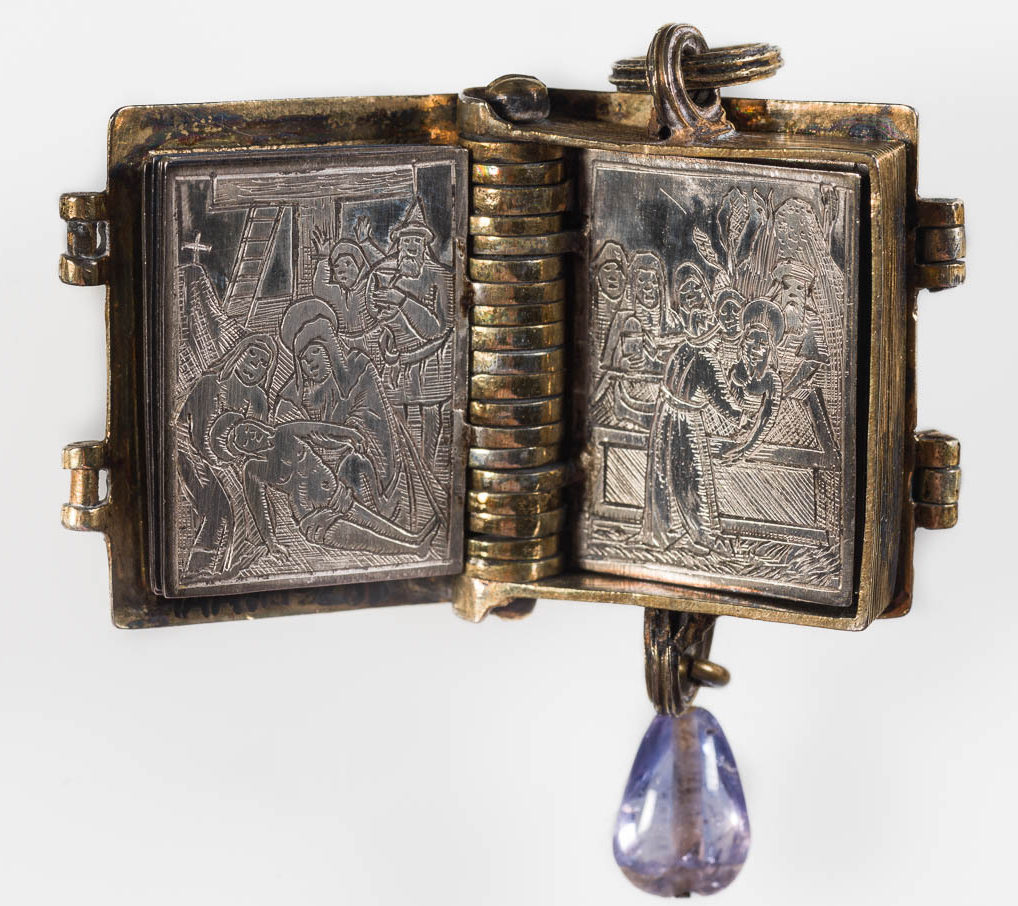When and where was this pendant made? It would appear that both the glass and silver-gilt mount date to the Renaissance. The glass panels are reverse-painted (a technique known today by the French name, verre églomisé [1]) and resemble German or Italian examples from the early seventeenth century. Pendants in the shape of books were fashionable during the Renaissance, especially in the sixteenth century.[2]

However, the earliest record for this pendant dates to 1871—and, interestingly, in that same year the Victoria and Albert Museum purchased a remarkably similar pendant from a dealer in Nuremberg.

The similarity between the two pieces makes one ask the question: could the seventeenth-century glass and metalwork have been re-used materials, combined during the Victorian period to make both the Courtauld’s pendant and the V&A’s?
Back to A 17th Century Pendant

